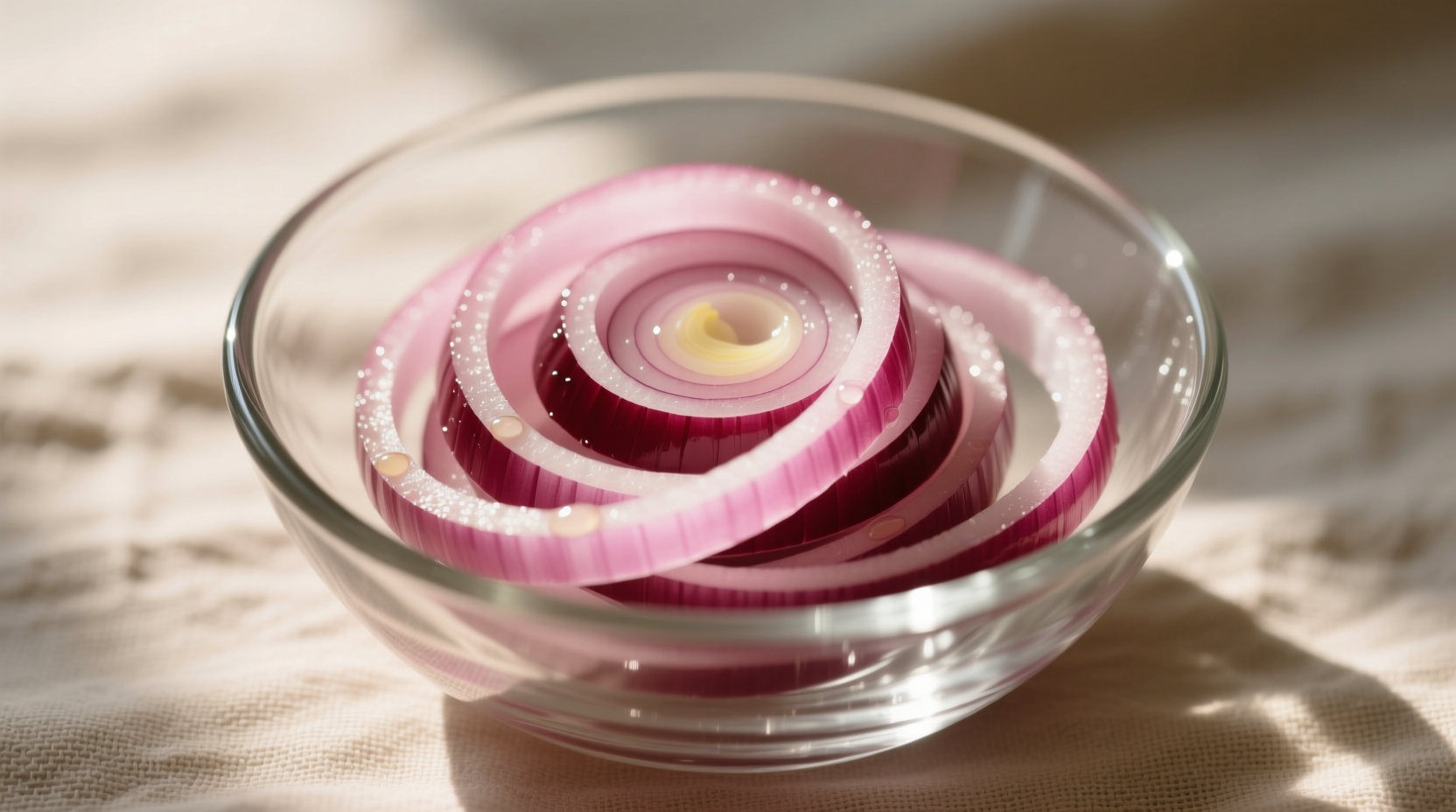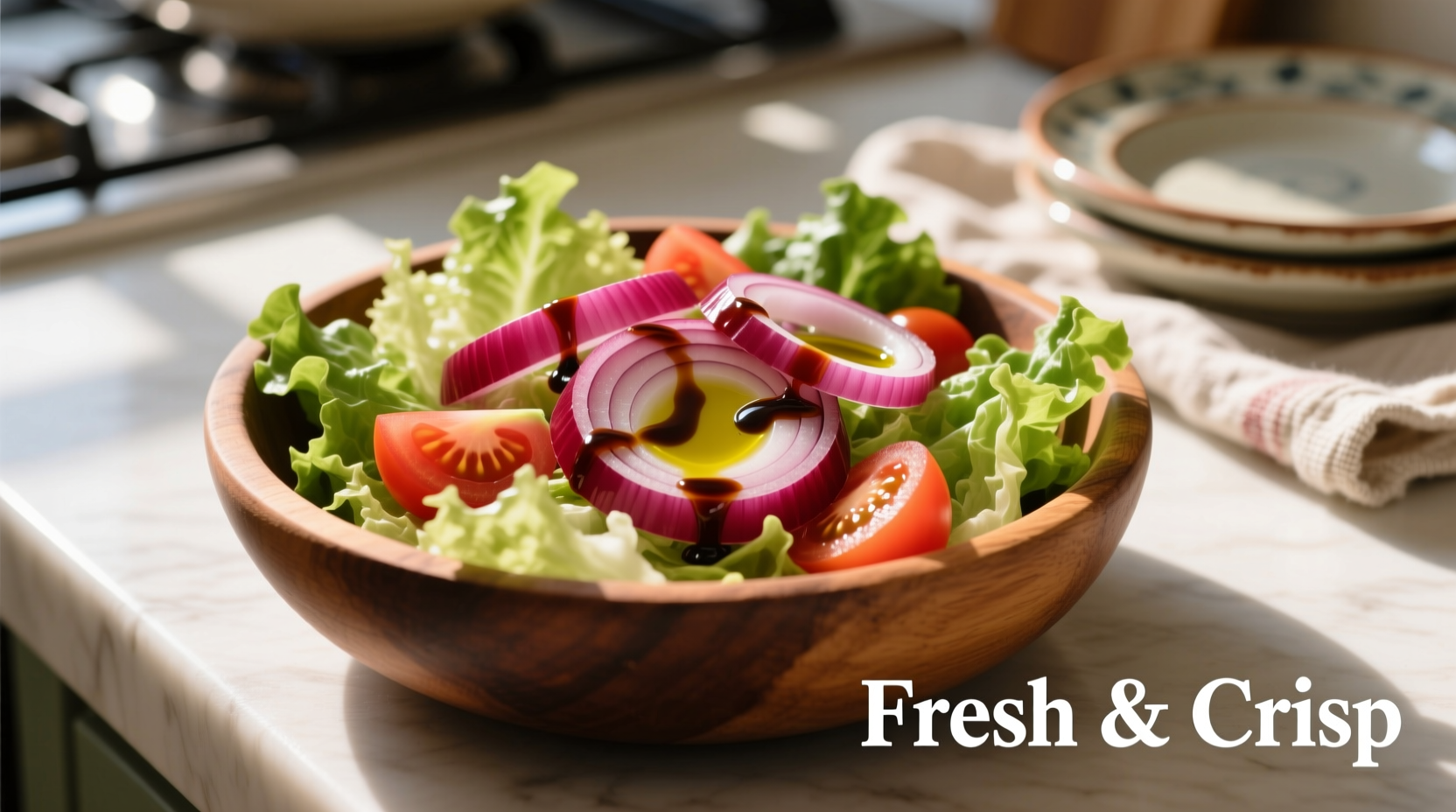Discover how to maximize the culinary potential of red onions in your salads with science-backed preparation techniques and flavor pairing principles that transform ordinary greens into extraordinary dishes. This comprehensive guide reveals professional chef secrets for using red onions effectively while avoiding common mistakes that ruin texture and flavor balance.
Why Red Onions Outperform Other Varieties in Salads
Unlike yellow or white onions, red onions contain lower levels of sulfur compounds, resulting in a naturally sweeter profile that complements fresh greens without overpowering them. According to USDA nutritional data, red onions maintain their crisp texture significantly longer than other varieties when raw, making them ideal salad components that won't wilt your greens.
| Onion Variety | Sulfur Content (mg/100g) | Shelf Life in Salad (hours) | Color Retention |
|---|---|---|---|
| Red Onion | 15.2 | 8-10 | Excellent |
| Yellow Onion | 28.7 | 3-4 | Poor |
| White Onion | 24.5 | 4-5 | Fair |
Data source: USDA FoodData Central
Selecting Premium Red Onions for Salad Applications
Choose firm bulbs with dry, papery skins that feel heavy for their size. Avoid onions with soft spots, sprouting centers, or damp areas which indicate spoilage. The deepest purple varieties typically offer the most vibrant color contrast in green salads. Professional chefs recommend selecting medium-sized onions (2-3 inches in diameter) as they provide the best balance of flavor intensity and manageable size for slicing.
Professional Preparation Techniques That Make All the Difference
The key to perfect red onion integration in salads involves precise cutting and strategic treatment:
- Chill before cutting - Refrigerate onions for 30 minutes to reduce tearing and maintain crispness
- Use a sharp chef's knife - Dull blades crush cells, releasing more pungent compounds
- Cut against the grain - Slice perpendicular to growth rings for optimal texture
- Soak strategically - For milder flavor, soak slices in ice water for 10-15 minutes
Food science research from Cornell University's Department of Food Science confirms that the ice water bath reduces sharpness by leaching out volatile sulfur compounds while preserving the onion's crisp texture. Cornell Food Science Department

Flavor Pairing Principles for Balanced Salad Composition
Red onions create dynamic flavor interactions with various salad components. Understanding these relationships helps you build harmonious dishes:
- Acidic ingredients (citrus, vinegar) - Balance red onion's natural sweetness
- Bitter greens (arugula, radicchio) - Contrast creates complexity
- Creamy elements (avocado, feta) - Mellow sharpness while adding richness
- Sweet components (berries, stone fruit) - Enhance natural sweetness
Avoid These Common Red Onion Salad Mistakes
Even experienced home cooks frequently make these errors that compromise salad quality:
- Adding onions too early - Toss red onions with greens just before serving to prevent wilting
- Using thick slices - Thin slices (1/8 inch or less) distribute flavor evenly
- Over-soaking - More than 20 minutes removes too much flavor and texture
- Incorrect seasoning order - Salt dressing first, then add onions to control moisture release
Optimal Storage Methods for Freshness Preservation
Proper storage extends red onion viability while maintaining salad-ready quality. Whole bulbs last 2-3 weeks in a cool, dark pantry with good air circulation. Once cut, store in an airtight container in the refrigerator for up to 5 days. The National Onion Association confirms that storing cut onions in vinegar-based solutions preserves both color and crispness longer than plain water. National Onion Association Storage Guidelines
Seasonal Applications and Culinary Evolution
Red onions have evolved from simple garnishes to essential salad components through culinary history:
- 1950s-1970s - Primarily used as colorful garnish in wedge salads
- 1980s-1990s - Incorporated into Mediterranean-inspired mixed greens
- 2000s-present - Recognized for flavor complexity in composed salads
- Current trends - Featured in innovative applications like pickled red onion ribbons
Practical Salad Combinations to Try This Week
Apply these principles with these chef-tested combinations that showcase red onions' versatility:
- Summer Harvest Salad - Watermelon, feta, mint, and thinly sliced red onion with lime vinaigrette
- Mediterranean Power Bowl - Chickpeas, cucumber, tomato, olives, and red onion with lemon-tahini dressing
- Autumn Harvest Mix - Roasted sweet potato, kale, apple slices, and quick-pickled red onion











 浙公网安备
33010002000092号
浙公网安备
33010002000092号 浙B2-20120091-4
浙B2-20120091-4